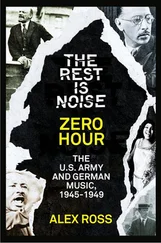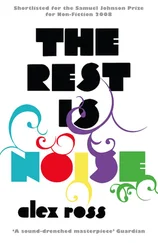Strauss, who had known Mahler since 1887, worried that his colleague was spreading himself too thin. “Don’t you compose at all any more?” he asked in a letter of 1900. “It would be a thousand pities if you devoted your entire artistic energy, for which I certainly have the greatest admiration, to the thankless position of theatre director! The theatre can never be made into an ‘artistic institution.’”
Mahler accomplished precisely this in Vienna. He hired the painter Alfred Roller to create visually striking, duskily lit stagings of the mainstream opera repertory, thereby helping to inaugurate the discipline of opera direction. He also codified the etiquette of the modern concert experience, with its worshipful, pseudo-religious character. Opera houses of the nineteenth century were rowdy places; Mahler, who hated all extraneous noise, threw out singers’ fan clubs, cut short applause between numbers, glared icily at talkative concert-goers, and forced latecomers to wait in the lobby. Emperor Franz Joseph, the embodiment of old Vienna, was heard to say: “Is music such a serious business? I always thought it was meant to make people happy.”
Mahler’s composing career got off to a much slower start. His Symphony No. 1 was first played in November 1889, nine days after Strauss’s Don Juan, but, where Strauss instantly won over the public, Mahler met with a mixture of applause, boos, and shrugs. The First begins, like Strauss’s Zarathustra, with an elemental hum—the note A whistling in all registers of the strings. The note is sustained for fifty-six bars, giving the harmony an eternal, unchanging quality that recalls the opening of Wagner’s Ring. There is a Wagnerian strain, too, in the theme of falling fourths that stems from the primeval drone. It is the unifying idea of the piece, and when it is transposed to a major key it shows an obvious resemblance to the motif of pealing bells that sounds through Parsifal. Mahler’s project was to do for the symphony what Wagner had done for the opera: he would trump everything that had gone before.
The frame of reference of Mahler’s symphonies is vast, stretching from the masses of the Renaissance to the marching songs of rural soldiers—an epic multiplicity of voices and styles. Giant structures are built up, reach to the heavens, then suddenly crumble. Nature spaces are invaded by sloppy country dances and belligerent marches. The third movement of the First Symphony begins with a meandering minor-mode canon on the tune “Frère Jacques,” which in Germany was traditionally sung by drunken students in taverns, and there are raucous interruptions in the style of a klezmer band—“pop” episodes paralleling the vernacular pranks in Strauss’s Don Juan and Till Eulenspiegel. Much of the first movement of the Third Symphony takes the form of a gargantuan, crashing march, which reminded Strauss of workers pressing forward with their red flags at a May Day celebration. In the finale of the Second Symphony, the hierarchy of pitch breaks down into a din of percussion. It sounds like music’s revenge on an unmusical world, noise trampling on noise.
Up through the Third Symphony, Mahler followed the late-Romantic practice of attaching detailed programmatic descriptions to his symphonies. He briefly gave the First the title “Titan”; the first movement of the Second was originally named “Funeral Ceremony.” The Third was to have been called, at various times, “The Gay Science,” “A Summer Night’s Dream,” and “Pan.”
With the turning of the century, however, Mahler broke with pictorialism and tone poetry. The Fourth Symphony, finished in 1900, was a four-movement work of more traditional, almost Mozartean design. “Down with programs!” Mahler said in the same year. Concerned to differentiate himself from Strauss, he wished now to be seen as a “pure musician,” one who moved in a “realm outside time, space, and the forms of individual appearances.” The Fifth Symphony, written in 1901 and 1902, is an interior drama devoid of any programmatic indication, moving through heroic struggle, a delirious funeral march, a wild, sprawling Scherzo, and a dreamily lyrical Adagietto to a radiant, chorale-driven finale. The triumphant ending was perhaps the one conventional thing about the piece, and in the Sixth Symphony, which had its premiere on May 27, 1906, eleven days after the Austrian premiere of Salome, Mahler took the triumph back. Strauss’s opera had been called “satanic,” and, as it happens, the same adjective was applied to Mahler’s symphony in the weeks leading up to the first performance. Mahler, too, would see how far he could go without losing the vox populi.
The setting for the premiere of the Sixth was the steel town of Essen, in the Ruhr. Nearby was the armaments firm of Krupp, whose cannons had rained ruin on French armies in the war of 1870–71 and whose long-distance weaponry would play a critical role in the Great War to come. Unsympathetic listeners compared Mahler’s new composition to German military hardware. The Viennese critic Hans Liebstöckl began a review of a subsequent performance with the line “Krupp makes only cannons, Mahler only symphonies.” Indeed, the Sixth opens with something like the sound of an army advancing—staccato As in the cellos and basses, military-style taps of a drum, a vigorous A-minor theme strutting in front of a wall of eight horns. A little later, the timpani set forth a marching rhythm of the kind that you can still hear played in Alpine militia parades in Austria and neighboring countries: Left! Left! Left-right-left!
The first movement follows the well-worn procedures of sonata form, complete with a repeat of the exposition section. The first theme is modeled on that of Schubert’s youthful, severe A-Minor Sonata, D. 784. The second theme is an unrestrained Romantic effusion, a love song in homage to Alma. It is so unlike the first that it inhabits a different world, and the entire movement is a struggle to reconcile the two. By the end, the synthesis seems complete: the second theme is orchestrated in the clipped, martial style of the first, as if love were an army on the march. Yet there is something strained about this marriage of ideas. The movement that follows, a so-called Scherzo, resumes the trudge of the opening, but now in superciliously waltzing three-quarter time. A sprawling, songful Andante, in the distant key of E-flat, provides respite, but Mahler’s battery of percussion instruments waits threateningly at the back of the stage. (During the rehearsals in Essen, Mahler decided to switch the middle movements, and retained that order in a revised version of the score.)
As the finale begins, the march rhythm—Left! Left! Left-right-left!—comes back with a vengeance. No composer ever devised a form quite like this one—wave after wave of development, skirling fanfares suggesting imminent joy, then the chilling return of the marching beat. The movement is organized around three “hammerblows” (or, in the revised version, two), which have the effect of triggering a kind of collapse. For the premiere, Mahler had a gigantic drum constructed—“the hide of a fully grown cow stretched on a frame a meter and a half square,” one critic wrote in sarcastic wonder—which was to have been struck with a mallet of unprecedented size. In the event, the drum produced only a muffled thump, to the amusement of the musicians. Like Strauss in Salome, Mahler is employing shock tactics on his audience, and he saves his biggest shock for the very end. The work is poised to die away to silence, with a three-note figure limping through the lower instruments. Then, out of nowhere, a fortissimo A-minor chord clangs like a metal door swung shut. Correctly performed, this gesture should make unsuspecting listeners jump out of their seats.
After the last rehearsal, Mahler sat in his dressing room, shattered by the power of his own creation. Alma reported that he “walked up and down … sobbing, wringing his hands, unable to control himself.” Suddenly Strauss poked his head through the door to say that the mayor of Essen had died and that a memorial piece needed to be played at the beginning of the program. Strauss’s only comment on the symphony was that the final movement was “over-instrumented.”
Читать дальше












